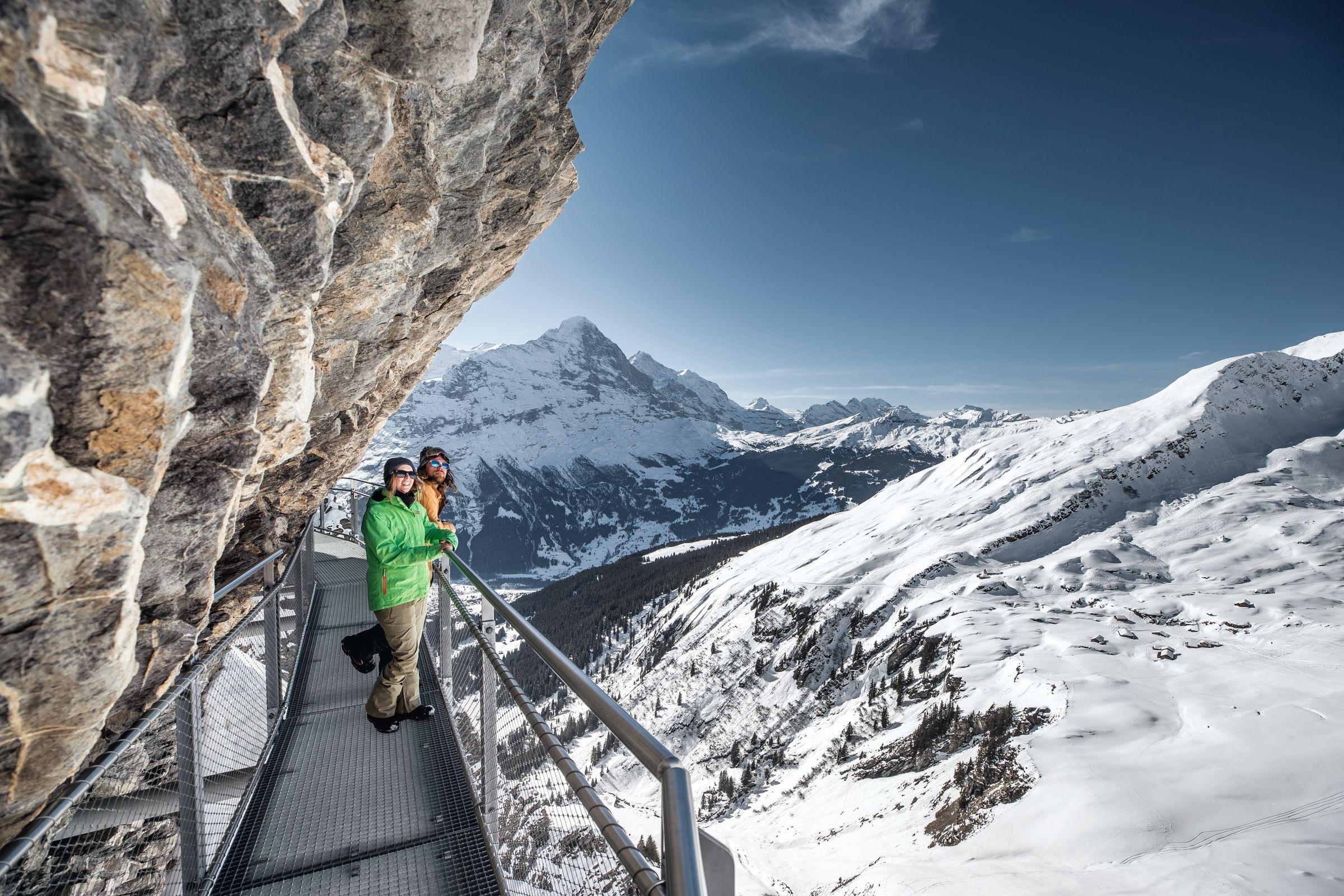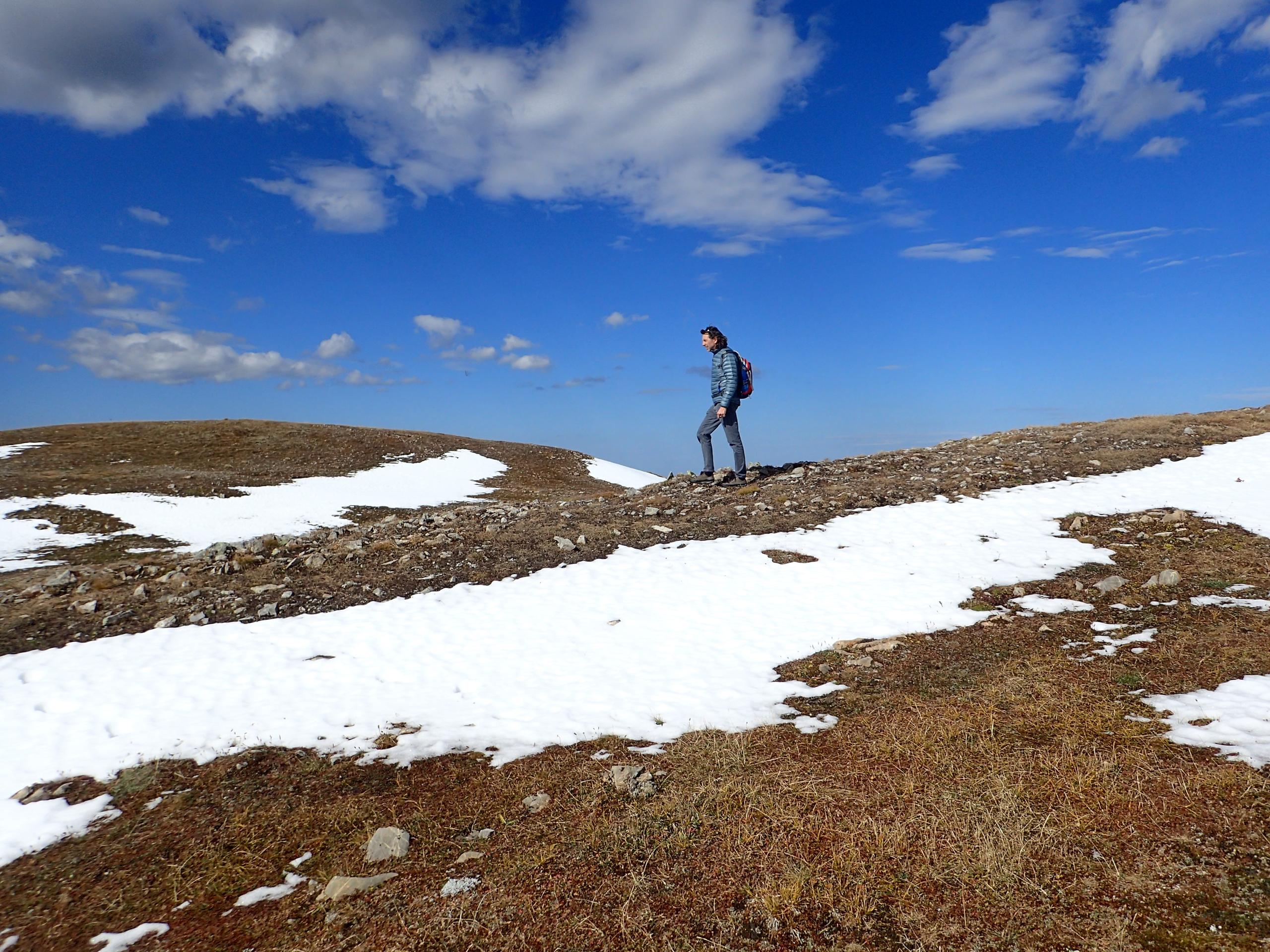
Going for a walk but taken for a ride
Who can remember simpler days when going for a walk in the mountains was, well, about going for a walk in the mountains?
A couple of weekends ago, I was standing with my wife, a friend and his daughter on a ridge watching other hiking-boot clad tourists venture out onto a shiny steel walkway bolted to the side of the cliff.
The views they were about to enjoy of the valley below and glistening peaks above were no better than ours seen from the grassy ridge. Yet many of them would have argued to the contrary. What they were seeing was complemented by the exhilaration of defying gravity.

They weren’t on the edge of the precipice; they had gone over – the metal grating and railing the only thing between them and a long, vertical drop.
We didn’t linger long since we had a good day’s walk ahead of us, much of it on the ridge that separates the mountain resort of Grindelwald and the emerald blue lake of Brienz.
But for most of the people, the observation plank would be as far as they got – to the satisfaction of the local tourist authorities.
That’s because the slopes leading up to the top of the Grindelwald FirstExternal link cable car station have become home to an amusement park. Literally.
What I saw brought to mind the words of a Swiss environmentalist who told me nearly 20 years ago of his concern the Alps could be turned into a Disneyland. Here was proof.
A little back from the ridge is the “Bagjump” – its name as uninspiring as the “First Cliff Walk” – where tourists pay CHF3 ($3) for a bounce on an oversized, inflatable cushion.
From there, steps lead up to a launchpad for the “First Flyer” and “First Glider”. For the former, two ticketholders at a time are strapped into harnesses, which in turn are attached to cables above. They whizz at over 80km/h to a point further down the slope. The glider is a similar experience, with the exception that four people are fastened together spread-eagle, suspended beneath a figure of the predatory bird.
At the end of the ride, they have the choice of descending the next part of the mountain – which, unlike Disneyland, is very real – on a three-wheeled cart, riding along a wide and winding gravel path, before steering scooters down the final paved section.
Choosing two of the activities costs CHF65 while a package of four goes for CHF99. That’s on top of the CHF30 ticket price for the cable car to the top.
Would you come for the walk, or the amusements? Let me know dale.bechtel@swissinfo.ch
Love it or hate it, Grindelwald and the company that owns and operates the local railways, cable cars, and gondolas in and around the resort have found a recipe to attract large numbers of tourists outside of the ski season and – better yet – getting the summer visitor to leave as much money behind as his winter counterpart who has to shell out CHF75 for a day’s ski pass.
The bigger picture
It’s a recipe more and more mountain resorts across the Alps are using.
But resistance is beginning to form. Locals in central Switzerland successfully petitioned last year against a masterplan to build a miniature Swiss alpine village, observation tower, treehouses and petting zoo on Mount Rigi. The “No to Rigi Disney World” protest resulted in a sustainability charter signed by citizens, town councils and businesses that operate the train and gondola servicing the mountain.

The author, walking not riding
The changes taking place in the Alps are also a response to new economic realities, demographics and climate change. A small group of activists wanting to bear witness to the developments hiked 1,800km across the range, from Vienna to Nice, repeating a trip they made 25 years earlier.
The “Whatsalp” journey was undertaken in 2017, but has just now been detailed in their book, Alpenwanderer (Alpine Walker), which describes the shrinking of glaciers and scars on the landscape left from floods, land- and mudslides, and the many barriers that have gone up in the meantime to protect against them. The authors also witnessed the growth of artificial snowmaking infrastructure and manmade reservoirs that have been dug out and filled to feed the snow cannon, as well as new summer attractions.
Almost twice as much freight is now moved across the Alps compared to 25 years ago and the general improvement of mountain roads has led to more weekend and holiday traffic. In stark contrast, the environmentalists observed that farming had largely disappeared from alpine areas along the Alpine spine that forms the French-Italian border.
New global initiative
My colleague Simon Bradley reported last week on a new global initiative, the High Mountain Summit, which aims to support sustainable development, disaster risk reduction and climate change adaptation in mountain regions.
The three-day meeting, held in Geneva, was initiated by the World Meteorological Organization (WMO). In no uncertain terms, the UN body said “rising global temperatures are causing unprecedented changes in the environments of high mountain regions”.
It added that increased risks of natural disasters “lead to food and water insecurity, health deprivation, destruction of communities, displacement of people and migration.”
If you have a couple minutes, it’s also worth reading Simon’s follow up interview with a leading glaciologist on what can be done.
In reaction to the changes and threats, Grindelwald has taken out an insurance policy in the guise of an amusement park. But the resort is simply treating the symptoms, not the cause.

In compliance with the JTI standards
More: SWI swissinfo.ch certified by the Journalism Trust Initiative
